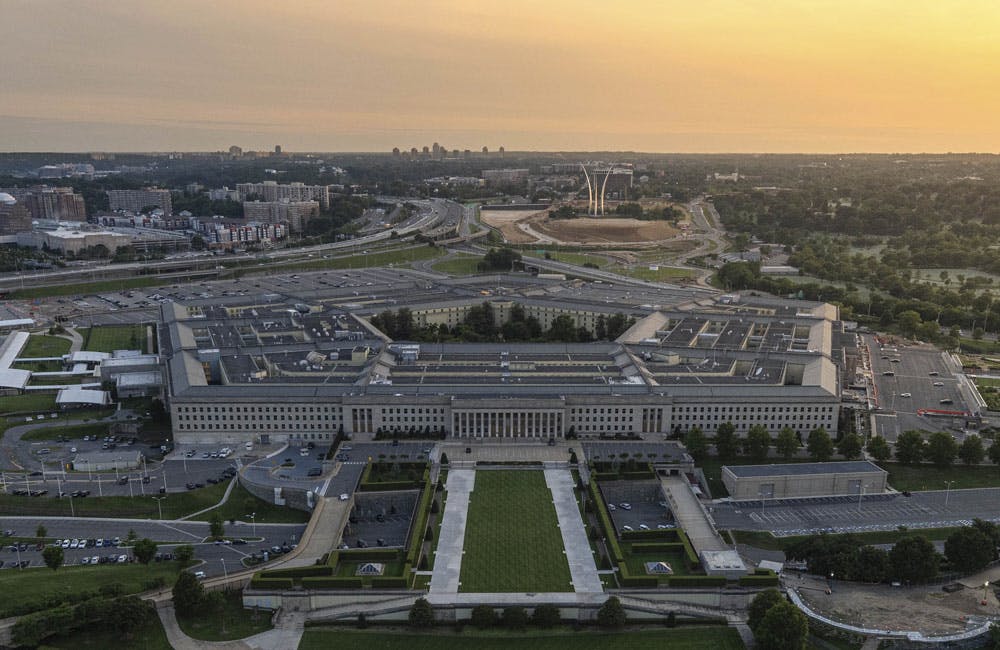NGA Goes Big on Data Labeling Amid AI Development
The agency is calling on industry to help build out its data labeling infrastructure in a massive $700 million contract.

The National Geospatial-Intelligence Agency is looking for new capabilities supporting artificial intelligence as part of its “largest data labeling request for proposal in the U.S. government,” said Director Vice Adm. Frank Whitworth.
“This represents a significant investment in computer vision, machine learning and AI. NGA will engage with commercial counterparts to navigate the challenges posed by increasing levels of GEOINT data,” Whitworth told reporters at a Defense Writers Group event this month. “Together, we will ensure delivery of timely, relevant and AI-enabled GEOINT to our customers, partners and allies.”
Data has become a critical component of today’s military and its operations, but as vast quantities of data become aggregated through tools like satellites, sifting through it to find pertinent information becomes evermore challenging.
NGA is focused on using AI to help support the warfighter. It created the Accreditation for GEOINT AI Models (AGAIM) pilot to evaluate a program’s model development and expand responsible use of GEOINT AI models.
“The accreditation pilot will expand the responsible use of GEOINT AI models and posture NGA and the GEOINT enterprise to better support the warfighter and create new intelligence insights. Accreditation will provide a standardized evaluation framework, implements risk management, promotes a responsible AI culture, enhances AI trustworthiness, accelerates AI adoption and interoperability, and recognizes high-quality AI while identifying areas for improvement,” said Whitworth.
Whitworth added that NGA established new training for responsible AI this year to accompany all coders and users of GEOINT AI and will make it available across the agency.
“This pilot for model accreditation is to make sure everyone has the same standards relative to this issue of distinction especially and accuracy, precision, etc, locational error, all that,” Whitworth said.
Whitworth’s agency also oversees Project Maven, the Pentagon’s secretive effort to use AI to identify targets on the battlefield using satellite technology. He noted that since the program came under NGA’s purview, it has “significantly” increased the number of models it has generated to detect things on the battlefield.
However, Whitworth noted humans would still need to be in the loop to truly verify detections and that DOD is still not close to automating the process.
“It takes humans, number one, to train the model. I know that there are going to be people out there that say models will start training themselves,” Whitworth said. “But let’s not forget, there’s some very clever adversaries out there that will confound some of the training data and confound some of these model solutions. I trust right now the 10, 20, 30, 40-year veteran to recognize that very quickly and to ensure that we recalibrate the model accordingly if we start seeing that sort of thing.”
This is a carousel with manually rotating slides. Use Next and Previous buttons to navigate or jump to a slide with the slide dots
-

DOD Wants to Accelerate GenAI With AI Rapid Capabilities Cell
The Defense Department sunset Task Force Lima and launched a new effort for generative AI development with the AI Rapid Capabilities Cell.
4m read -

AI FedLab
The Defense IT Summit will bring together federal and industry leaders to discuss AI in defense operations, CJADC2 and multi and hybrid cloud security.
Carahsoft Conference & Collaboration Center | 11493 Sunset Hills Rd. Reston, VA 20190 -

Outgoing OPM CIO Reflects on Two-Year Cloud Sprint
Guy Cavallo reflects on his tenure at OPM, where he migrated legacy data centers to the cloud and advanced the agency's tech workforce.
5m watch -

Digitizing Records for an AI-Driven Future
CMS and NARA are digitizing and standardizing data to enable AI, while also developing effective governance strategies to manage associated risks.
30m watch








